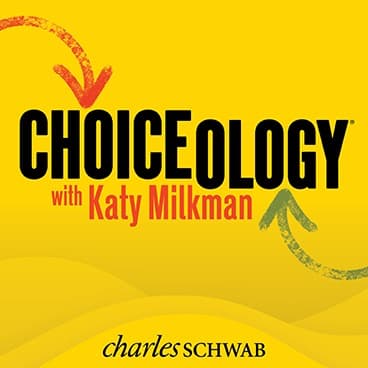Out of Proportion: With Guests Damon Lesmeister & Kelly Shue
Many of the decisions we make require us to compare numbers. Which car is most fuel efficient? How is a stock performing relative to the market? How risky is one medication versus another? A problem arises when we fail to make these comparisons in the right units.
In this episode of Choiceology with Katy Milkman, we look at the mistakes we make when we overweight absolute numbers and neglect their relative value.
Damon Lesmeister is a wildlife biologist in Oregon who studies a very special bird: the northern spotted owl. This iconic animal is struggling to survive in the old growth forests of the Pacific Northwest. Among other challenges, the northern spotted owl is being crowded out of its habitat by an invasive species: the barred owl. Conservationists are now faced with a difficult decision, but one that is made more clear by properly comparing the relative sizes of the two owl populations.
Damon Lesmeister is a research wildlife biologist with the U.S. Forest Service and holds courtesy faculty appointments with Oregon State University in the Departments of Fisheries and Wildlife, and Forest Engineering, Resources and Management.
Next, Yale finance professor Kelly Shue joins Katy to talk about places where non-proportional thinking is likely to occur and why it's such an easy mistake to make. She explains how the dollar value change of a share is much less important than the percentage change. Focusing solely on the dollar value can lead to consequential investor errors.
Kelly Shue is a finance professor at Yale University and serves as an associate editor at The Journal of Finance and Journal of Financial Economics She previously served as an editor at the Review of Finance.
You can read more about non-proportional thinking in financial markets in Kelly Shue's research paper co-authored with Rick Townsend.
Finally, Katy discusses how you can avoid these non-proportional errors by making calculations that consider the denominator in any decision involving a ratio.
Choiceology is an original podcast from Charles Schwab.
If you enjoy the show, please leave a rating or review on Apple Podcasts.
Learn more about behavioral finance.
All expressions of opinion are subject to change without notice in reaction to shifting market conditions.
The comments, views, and opinions expressed in the presentation are those of the speakers and do not necessarily represent the views of Charles Schwab.
Data contained herein from third-party providers is obtained from what are considered reliable sources. However, its accuracy, completeness or reliability cannot be guaranteed.
Examples provided are for illustrative purposes only and not intended to be reflective of results you can expect to achieve.
All corporate names and market data shown above are for illustrative purposes only and are not a recommendation, offer to sell, or a solicitation of an offer to buy any security.
The policy analysis provided by the Charles Schwab & Co., Inc., does not constitute and should not be interpreted as an endorsement of any political party.
Investing involves risk, including loss of principal.
The book How to Change: The Science of Getting from Where You Are to Where You Want to Be is not affiliated with, sponsored by, or endorsed by Charles Schwab & Co., Inc. (CS&Co.). Charles Schwab & Co., Inc. (CS&Co.) has not reviewed the book and makes no representations about its content.
Apple Podcasts and the Apple logo are trademarks of Apple Inc., registered in the U.S. and other countries.
Google Podcasts and the Google Podcasts logo are trademarks of Google LLC.
Spotify and the Spotify logo are registered trademarks of Spotify AB.



